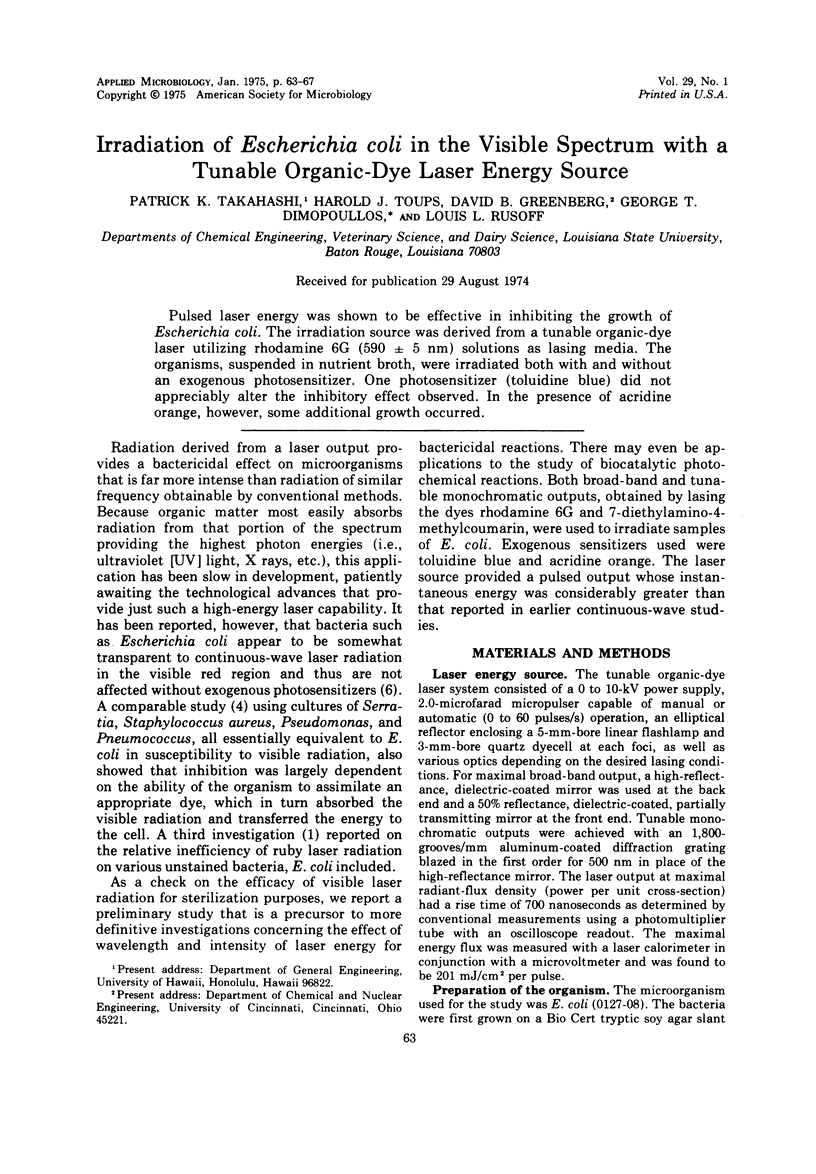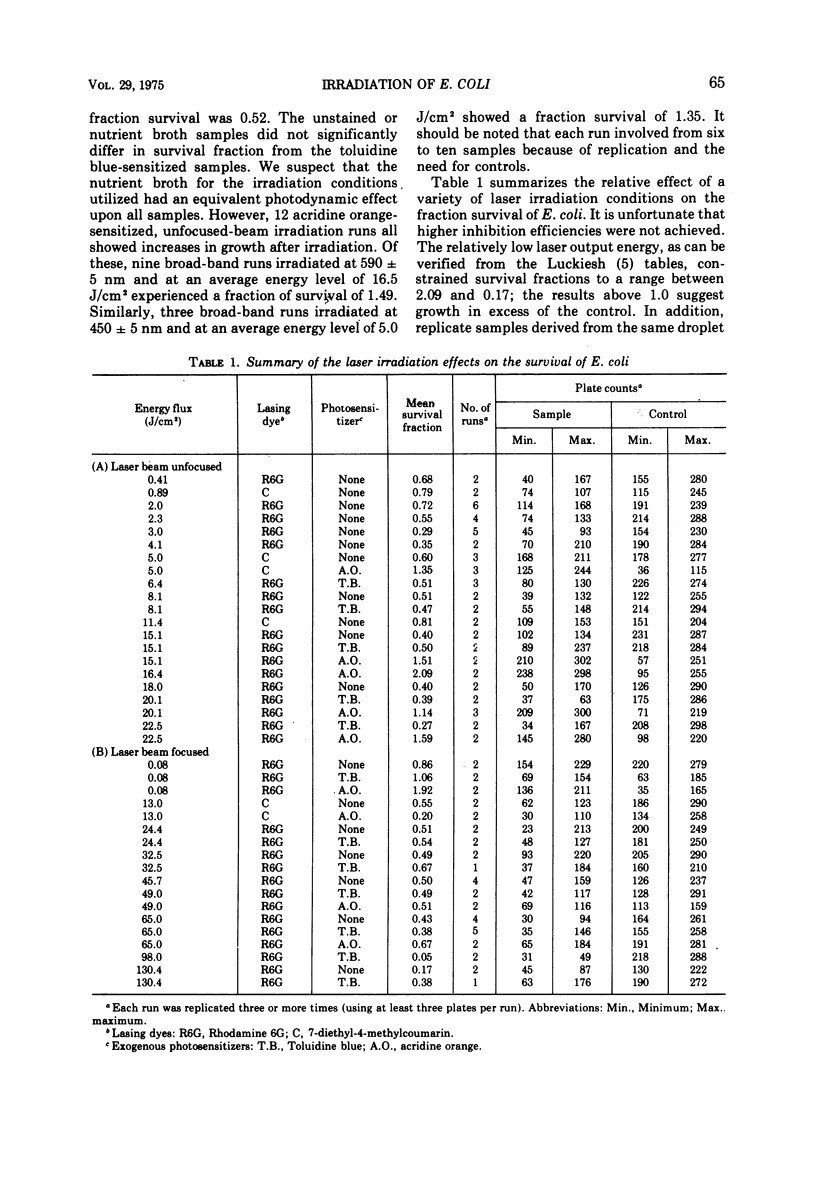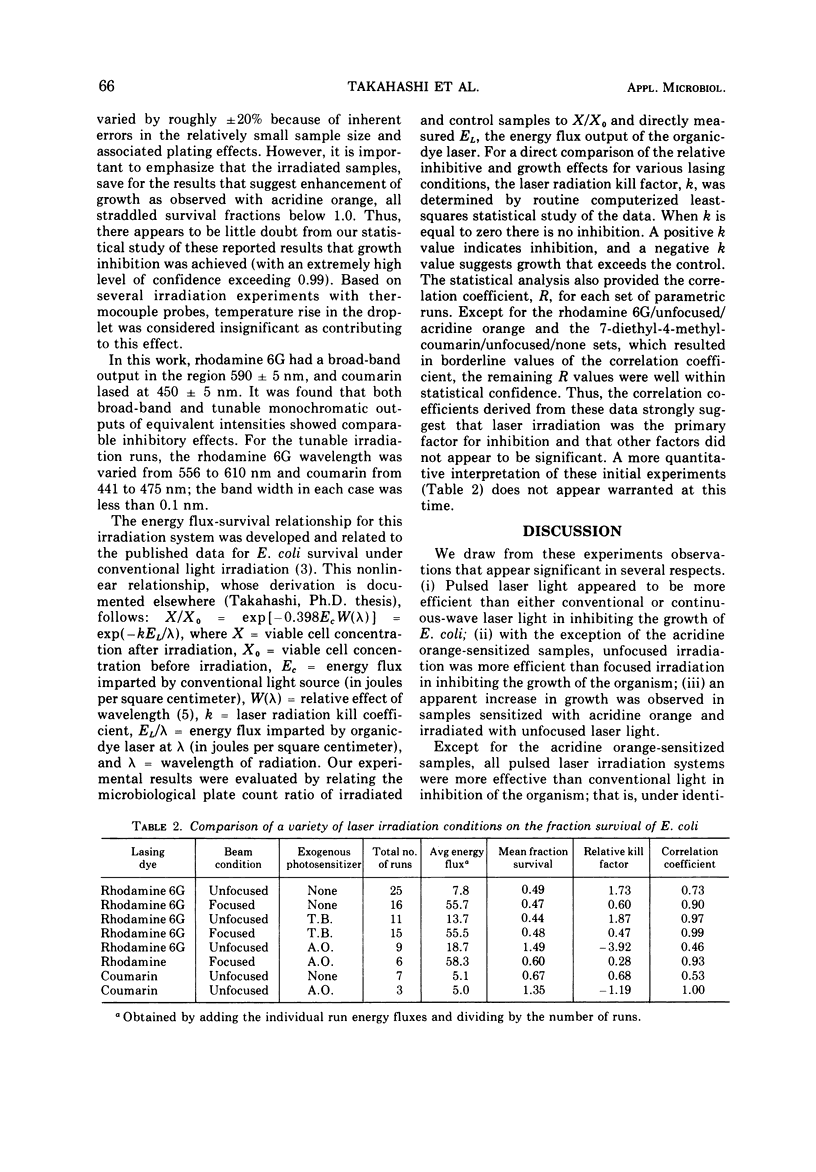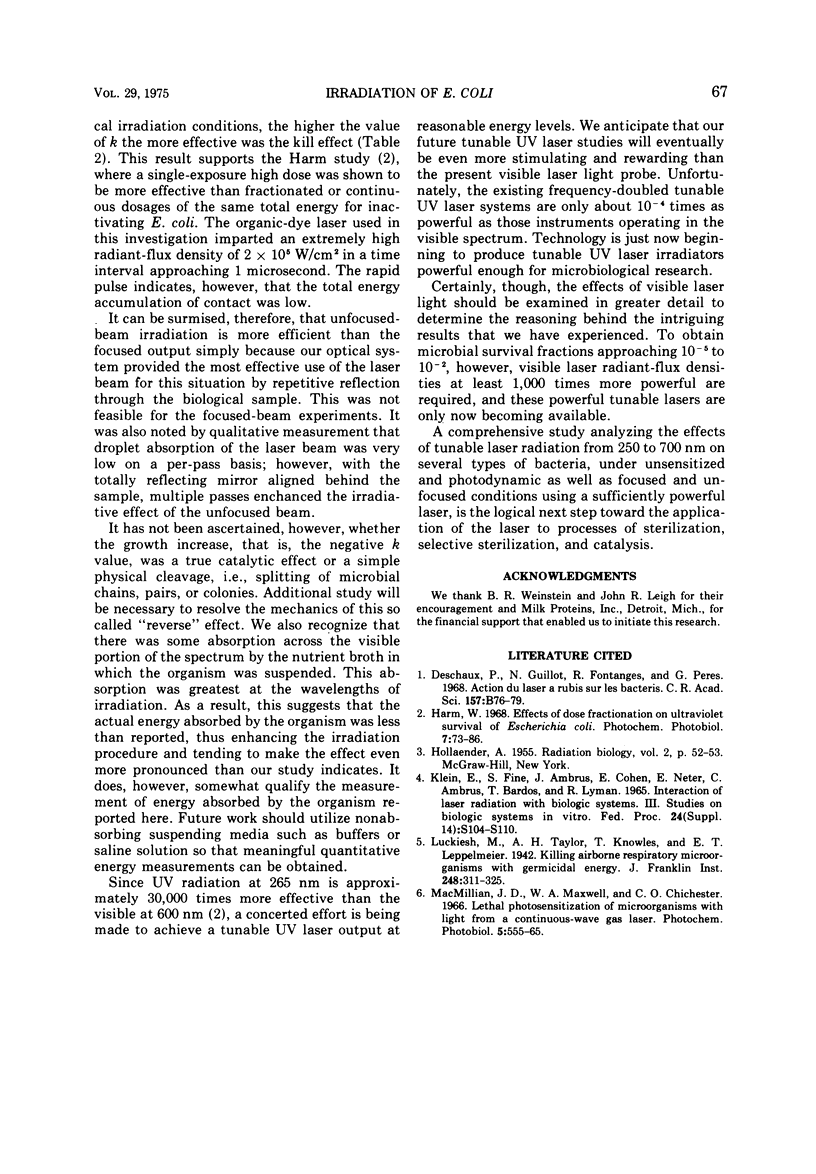Abstract
Pulsed laser energy was shown to be effective in inhibiting the growth of Escherichia coli. The irradiation source was derived from a tunable organic-dye laser utilizing rhodamine 6G (590 ± 5 nm) solutions as lasing media. The organisms, suspended in nutrient broth, were irradiated both with and without an exogenous photosensitizer. One photosensitizer (toluidine blue) did not appreciably alter the inhibitory effect observed. In the presence of acridine orange, however, some additional growth occurred.
Full text
PDF




Selected References
These references are in PubMed. This may not be the complete list of references from this article.
- Harm W. Effects of dose fractionation on ultraviolet survival of Escherichia coli. Photochem Photobiol. 1968 Jan;7(1):73–86. doi: 10.1111/j.1751-1097.1968.tb05831.x. [DOI] [PubMed] [Google Scholar]
- Macmillan J. D., Maxwell W. A., Chichester C. O. Lethal photosensitization of microorganisms with light from a continuous-wave gas laser. Photochem Photobiol. 1966 Jul;5(7):555–565. doi: 10.1111/j.1751-1097.1966.tb09845.x. [DOI] [PubMed] [Google Scholar]


